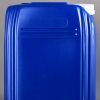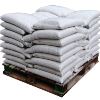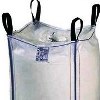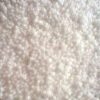| Anmol Chemicals is the pioneer manufacturers of Stearic Acid, Pharmaceutical Excipients Food & Flavor chemicals in India. We offer Halal and Kosher Stearic Acid made in an ISO9001, ISO22000 (FSSC22000) cGMP and GLP certified facility. Our group has several manufacturing facilities spread across the world, supported by toll manufacturers and representatives in UAE, Europe, USA, China and has several associated manufacturing facilities spread across India. All the Information on Physics, Chemistry, Applications, Uses and Technology on Manufacture of Stearic Acid is in these pages. |
| The units in the group have one or more of the certifications like FDA GMP, ISO 9001, ISO 22000, HACCP, REACH, Kosher & Halal and DMF support is available. |





Stearic Acid BP Ph Eur USP FCC Food Grade & Commercial Pure Manufacturers
Stearic acid CAS Number 57-11-4
Stearic Acid SDS GHS, MSDS Sheet Manufacturers
Stearic Acid
BP Ph Eur USP FCC Food Grade & Commercial Pure

English Stearic Acid and Stearate
Spanish Ácido esteárico y estearato
Portuguese Fabricantes de Ácido Esteárico e Estearato
French Acide stéarique et stéarate
Dutch Stearinezuur en stearaat
German Stearinsäure und Stearat
Italian acido stearico e stearato
Stearic Acid BP Ph Eur Grade Specifications
Action and use: Excipient.
DEFINITION
Mixture consisting mainly of stearic (octadecanoic) acid (C18H36O2; Mr 284.5) and palmitic
(hexadecanoic) acid (C16H32O2; Mr 256.4) obtained from fats or oils of vegetable or animal
origin.
Content:
Stearic acid 50: Stearic acid: 40% to 60%. Sum of contents of stearic and palmic acid minimum minimum 90%
Stearic acid 70: Stearic acid: 60% to 80%. Sum of contents of stearic and palmic acid minimum minimum 90%
Stearic acid 95: Stearic acid: >90%. Sum of contents of stearic and palmic acid minimum minimum 96%
CHARACTERS
Appearance: White or almost white, waxy, flaky crystals, white or almost white hard masses, or white or yellowish-white powder.
Solubility: Practically insoluble in water, soluble in ethanol (96 per cent) and in light petroleum (bp: 50-70 °C).
IDENTIFICATION
A. Freezing point (see Tests).
B. Acid value: 194 to 212, determined on 0.5 g.
C. Examine the chromatograms obtained in the assay.
Results The principal peaks in the chromatogram obtained with the test solution are similar in
retention time to those in the chromatogram obtained with the reference solution.
TESTS
Appearance: Heat the substance to be examined to about 75 °C. The resulting liquid is not more intensely coloured than reference solution.
Acidity: Melt 5.0 g, shake for 2 min with 10 mL of hot carbon dioxide-free water, cool slowly and filter.
To the filtrate add 0.05 mL of methyl orange solution R. No red colour develops.
Iodine value:
Stearic acid 50: I. V. = maximum 4
Stearic acid 70: I. V. = minimum 4
Stearic acid 95: I. V. = minimum 1.5
Freezing point:
Stearic acid 50: 53-59
Stearic acid 70: 57-64
Stearic acid 95: 64-69
Nickel: Maximum 1 ppm.
ASSAY
By Gas chromatography: To pass the test
Stearic Acid USP Grade Specifications
Octadecanoic acid.
Stearic acid CAS Number 57-11-4
Stearic Acid is manufactured from fats and oils derived from edible sources and is a mixture of Stearic Acid (C18H36O2) and palmitic acid (C16H32O2). The content of C18H36O2 is not less than 40.0 percent, and the sum of the two is not less than 90.0 percent.
NOTE: Stearic Acid labeled solely for external use is exempt from the requirement that it be prepared from edible sources.
Packaging and storage: Preserve in well-closed containers.
Iodine value: not more than 4.
Residue on ignition: not more than 4 mg, determined on a 4-g portion (0.1%).
Heavy metals: 0.001%.
Mineral acid: Shake 5 g of melted Stearic Acid with an equal volume of hot water for 2 minutes, cool, and filter: the filtrate is not reddened by the addition of 1 drop of methyl orange.
Neutral fat or paraffin: Add 1 g of Stearic Acid to 30 mL of anhydrous sodium carbonate solution (1 in 60) in a flask, and boil the mixture: the resulting solution, while hot, shows not more than a faint opalescence.
Organic volatile impurities: meets the requirements.
Stearic Acid FCC Food Grade Specifications
Octadecanoic Acid
C18H36O2 Formula wt 284.48
CAS Number 57-11-4
DESCRIPTION
Stearic Acid occurs as a hard, white or faintly yellow, somewhat glossy and crystalline solid or as a white or yellowwhite powder. It is a mixture of solid organic acids obtained from fats consisting chiefly of Stearic Acid (C18H36O2) and palmitic acid (C16H32O2). Stearic Acid is practically insoluble in water. One gram dissolves in about 20 mL of alcohol, in 2 mL of chloroform, and in about 3 mL of ether.
Function: Component in the manufacture of other foodgrade additives; lubricant; defoaming agent.
REQUIREMENTS
Acid Value: Between 196 and 211.
Iodine Value: Not more than 7.
Lead: Not more than 2 mg/kg.
Residue on Ignition: Not more than 0.1%.
Saponification Value: Between 197 and 212.
Titer (Solidification Point): Between 54.5° and 69°.
Unsaponifiable Matter: Not more than 1.5%.
Water: Not more than 0.2%.
For Original Monographs of Stearic Acid, please check with the web-pages of the Pharmacopoeia.
We also manufacture Calcium Stearate, Magnesium Stearate, Potassium Stearate, Sodium Stearate and Zinc Stearate.
Stearic Acid Manufacturers
Anmol Chemicals
S-8, SARIFA MANSION, 2ND FLANK ROAD, CHINCHBUNDER, MUMBAI 400009, INDIA
TEL: (OFFICE) 91-22-23770100, 23726950, 23774610, 23723564. FAX: 91-22-23728264
e-mail: anmolc@mtnl.net.in

Fracture Diverting Agent, Ferric Chloride Hexahydrate, Malic Acid, Skatole & Indole, Potassium Bicarbonate & Carbonate, Sodium Caprylate, Steartic Acid, Tartartric Acid
Exports to USA, Canada, UAE, Dubai, South Africa, Tanzania, Kenya, Nigeria, Egypt, Uganda, Turkey, Mexico, Brazil, Chile, Argentina, Europe Netherlands, Italy, Spain, Germany, Portugal, France, Malaysia, Indonesia, Thailand, Vietnam, Korea, Japan, etc.
Copyright and Usual Disclaimer is Applicable.